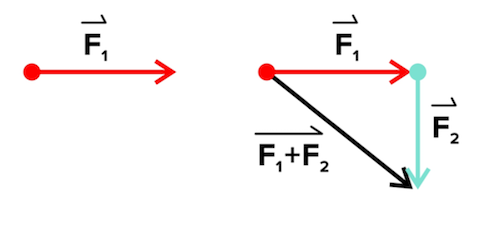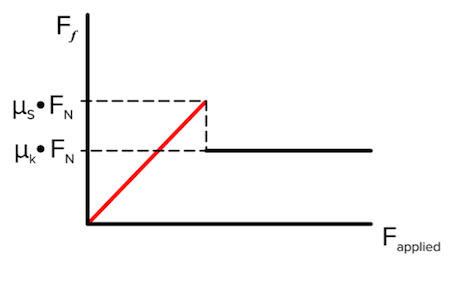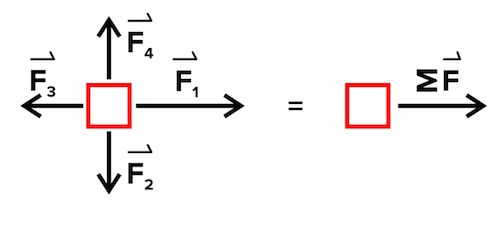Force, Work, and, Energy for the MCAT: Everything You Need to Know
/Learn key MCAT concepts about work, energy, and force, plus practice questions and answers
(Note: This guide is part of our MCAT Physics series .)
Part 1: Introduction to forces, energy, and work
Part 2: Forces
a) Types of forces
b) Newton’s three laws
c) Conservative versus nonconservative forces
Part 3: Energy
a) Types of energy
b) Conservation of energy
Part 4: Work
a) Work done by constant force
b) Work-kinetic energy theorem
c) Power
d) Mechanical advantage
e) Torque
Part 5: High-yield terms and equations
Part 6: Practice passage on force, work, and energy
Part 7: Force, work, and energy practice questions
----
Part 1: Introduction to forces, energy, and work
Forces, energy, and work are some of the first subjects taught in most introductory physics classes. While these are only medium-yield MCAT subjects, understanding them can help with much more than force and energy-specific questions. They’re super important for most other physics topics, and they might even help you develop an intuition for some concepts in biology or chemistry!
In the guide below, you’ll find the most important terms in bold font. When you see one, try to define it in your own words and create your own examples. This is a great way to check your understanding, and studying will be much easier in the long run if you phrase things in a way that makes the most sense to you!
At the end of this guide, there’s an MCAT-style practice passage and standalone questions that will not only test your knowledge on forces, energy, and work but also show you how the AAMC likes to ask questions.
Let’s get started!
----
Part 2: Forces
“Force” is a word you’ve probably heard before in a number of ways, but its definition in physics is more precise:
A force is a push or pull that makes something accelerate if it is unopposed.
That’s it! Later we’ll talk about different reasons why something might be pushed or pulled, but at the end of the day, this definition will stay the same. Simply imagining forces as pushes and pulls will get you a long way.
Forces are also vectors, which mean that they have both magnitude and direction. Every force must have both. To think about vectors, imagine an arrow similar to the ones shown below.
Figure: force vectors
An arrow has to have some length, and it has to point in some direction; otherwise, it’s not an arrow. Like all vectors, forces can also be combined. Forces in the same direction will make a bigger force, and forces in opposite directions will cancel out.
The last thing you should know about forces is also important: the unit of measurement for forces is Newtons.
Now that we’ve gone over the basics, let’s look at some different types of forces.
a) Types of forces
Imagine you throw a football and kick a soccer ball shortly afterwards. The magnitude of each force will depend on different properties, specifically the strength of your arm muscles versus your leg muscles. In the same way, the universe has different kinds of “muscles” that come up a lot in physics problems. Let’s talk about two of the most common ones.
Gravitational Force: This is the force that pulls masses toward each other. You remember it from all those times you jumped in the air and didn’t fly off into space! There is a general equation for the gravitational force between any two objects in the universe, but when you’re on earth, the equation simplifies to the following:
The force of gravity on an object is also called that object’s weight. People often think weight and mass are the same, but they actually aren’t. Here’s a definition for each:
Mass: the amount of matter in something, measured in kilograms.
Weight: the strength of the gravitational force on something, measured in Newtons.
To get from mass to weight for an object on earth, multiply by 9.8. So, if a backpack has a mass of 10 kg, it weighs 98 N.
Friction: This is the force that tries to slow down an object sliding across a surface. To find the magnitude of friction, you use the following equation:
(A normal force is the force that a surface pushes on the object with. It is called “normal” because in physics “normal” is a synonym for “perpendicular,” and surfaces always push objects in a perpendicular direction. On a horizontal surface, the normal force is equal to the object’s weight.)
There are two more important things to remember about friction:
1. Friction is a non-conservative force. We’ll talk about this more later, but it essentially means that friction sucks energy out of the system.
2. The coefficient of friction depends on the materials involved and whether or not the object is moving. The coefficient of static friction is used when the object is at rest. It gives the maximum force that friction can resist with before the object begins to move. Once the object is moving, the coefficient of kinetic friction takes over. It gives a weaker constant force that resists movement.
The coefficient of static friction is bigger than the coefficient of kinetic friction.
Instead of calculating forces working on every single particle within an object, it is sufficient to consider the force as acting on a single point. To simplify calculations, a force is considered to work on the center of mass of an object. The center of mass is a single point inside an object that represents the weighted average location of the mass distribution.
Every type of force has its own rules, but this means you’ll often be given these equations if you need them in a problem. The following rules are true for all forces, and it’s more likely that you’ll have to remember them on your own.
b) Newton’s three laws
These three laws are true for all forces; Newton’s laws tell you what the forces we talked about earlier do. Here’s what each says:
1. Newton’s First Law: An object at rest will stay at rest unless a force acts on it, and an object in motion will stay in motion unless a force acts on it.
The first law is the reason you’d fly off a bike if you ride into a curb: you’re moving, and the curb only applies a force to the bike, so you keep on moving, right onto the (hopefully) grass.
2. Newton’s Second Law: The summation of forces on an object is equal to the mass of the object times its acceleration.
This is the most important of Newton’s Laws, and one of the most important laws in physics. It usually appears as
The second law is very important, so let’s go through each term in that equation.
Figure: net force free body diagram
Gain instant access to the most digestible and comprehensive MCAT content resources available. 60+ guides covering every content area. Subscribe today to lock in the current investments, which will be increasing in the future for new subscribers.





